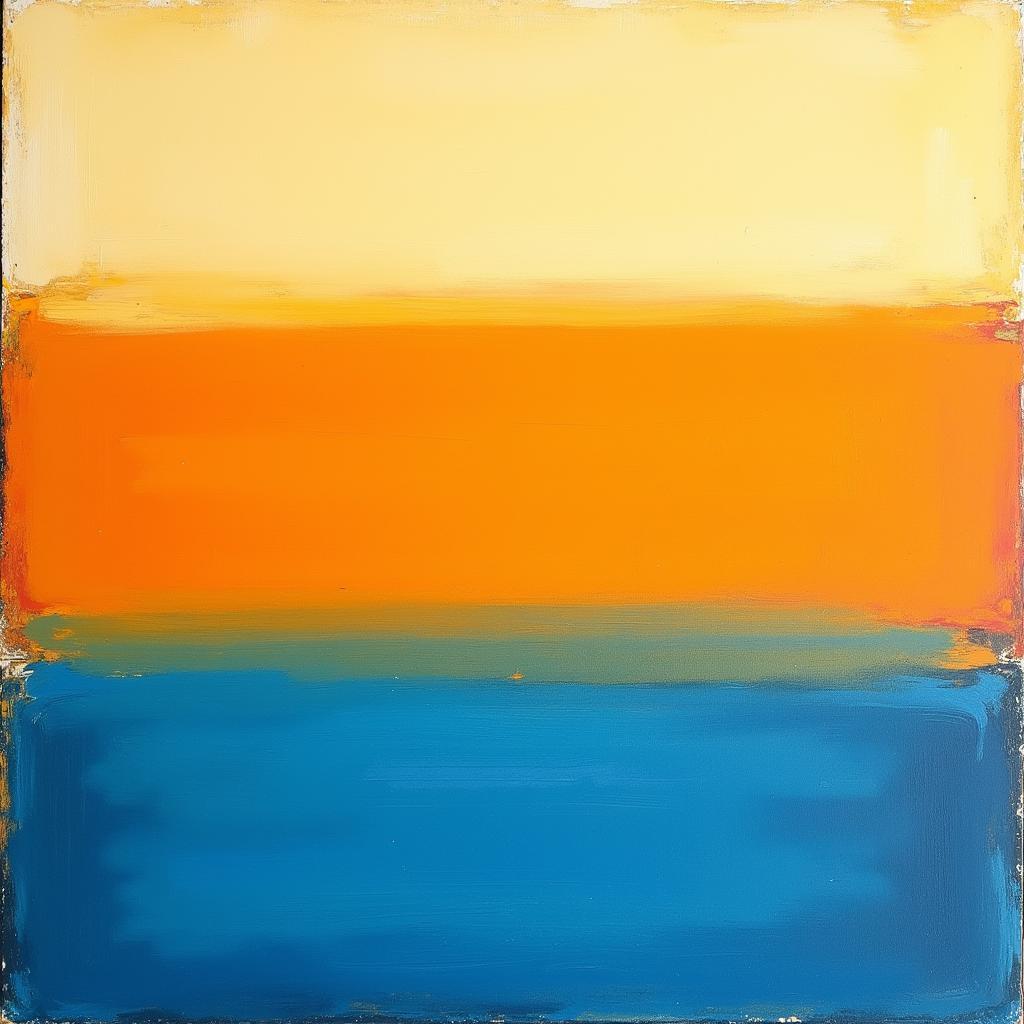When we talk about “what colors are subjects,” we’re diving into the captivating realm of color theory, particularly its application in art. This isn’t about colors as mere descriptors (like a “blue shirt”), but rather how colors themselves become the stars of the show, conveying emotions, guiding the viewer’s eye, and even telling stories without a single word.
Color as Subject: More Than Meets the Eye
Think about Mark Rothko’s iconic abstract paintings – vast canvases filled with seemingly simple blocks of color. At first glance, you might wonder, “What’s the subject?” But look closer. Those colors aren’t just pretty; they evoke feelings. The deep blues might stir a sense of melancholy, while a vibrant orange could spark joy. In essence, the colors are the subject, communicating directly to our emotions.
 Abstract color field painting
Abstract color field painting
Beyond Abstract: Color as Storytelling
Color as subject matter isn’t limited to abstract art. Consider Vincent van Gogh’s “The Night Cafe.” The jarring yellows and greens aren’t just decorative; they amplify the painting’s atmosphere of unease and isolation. Here, color becomes a narrative tool, deepening the viewer’s understanding of the scene.
The Science Behind the Feeling: Color Psychology
Why do certain colors evoke particular emotions? It’s not arbitrary. Color psychology explores the impact of color on human behavior and perception. For instance, blue, often associated with calmness and trust, is frequently used by brands to inspire confidence. On the other hand, red, linked to excitement and urgency, is a powerful tool for attracting attention.
Playing with Perception: Color Interaction
“What colors are subjects” also delves into how colors interact with each other, influencing our perception of space, form, and even other colors. A small, bright yellow object on a dark blue background will appear to advance, while a large, dark blue shape on a light yellow background might seem to recede. Artists manipulate these relationships to create depth, movement, and visual interest.
Want to Dive Deeper into the World of Color?
Explore more about the magic of color mixing:
The Art of Seeing: Color as a Language
Understanding “what colors are subjects” is about recognizing color as a powerful language – one that speaks to our emotions, shapes our understanding, and enriches our visual experiences. By learning to “read” this language, we unlock a deeper level of appreciation for the art and design that surround us.
“Color has a language that speaks directly to the soul,” says renowned art therapist, Dr. Elena Martinez. “By understanding this language, we can unlock hidden emotions and access a deeper understanding of ourselves and the world around us.”
Unlocking Your Creative Potential
Next time you encounter a work of art, ask yourself, “How are colors being used as subjects?” What emotions do they evoke? How do they contribute to the overall message? You might be surprised by what you discover.
FAQs: Delving Deeper into Color as Subject
-
Can any color be a subject in art? Absolutely! From the boldest red to the most subtle gray, every color has the potential to take center stage and convey meaning in a work of art.
-
Is color theory only relevant for artists? Not at all! Understanding color theory can benefit anyone, from designers and marketers to homeowners looking to create a certain ambiance in their living spaces.
Ready to Explore the Power of Color in Your Own Life?
Contact Color Box Hanoi today! Our team of color experts can help you unlock a world of possibilities, whether you’re looking to transform your home, create a captivating brand identity, or simply deepen your understanding of the language of color.
Call us at: 0373298888
Email us at: [email protected]
Visit our showroom: 86 Cầu Giấy, Hà Nội.
Our dedicated customer support team is available 24/7 to answer your questions and guide you on your color journey.